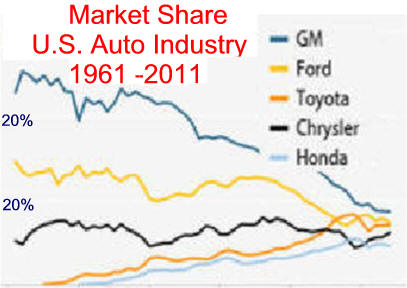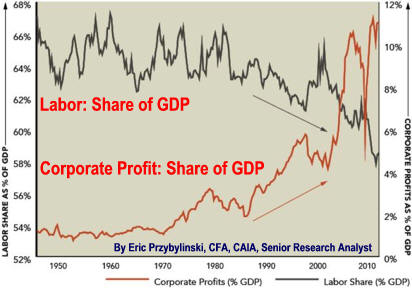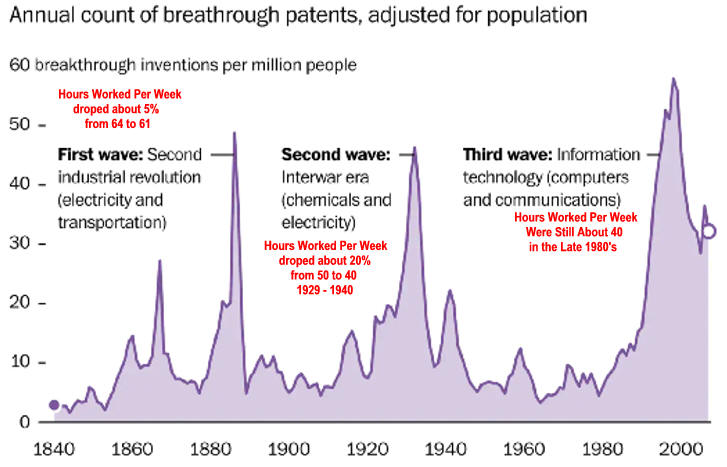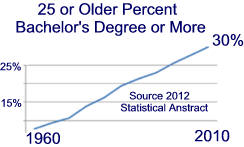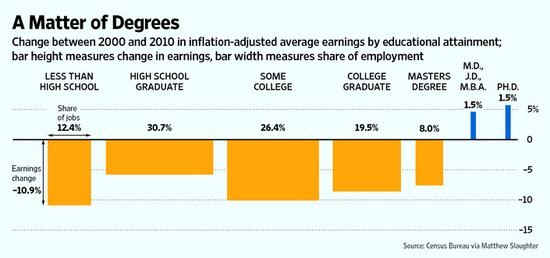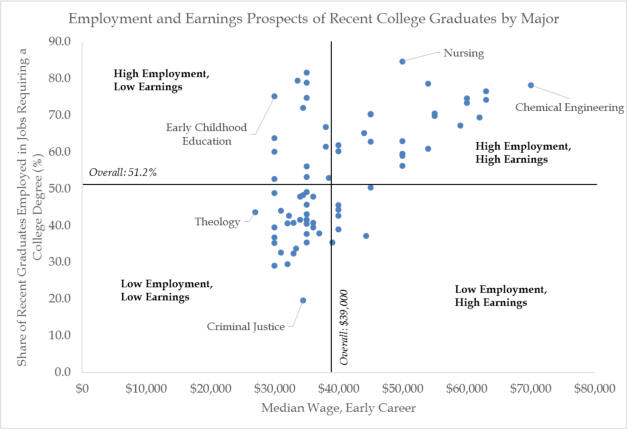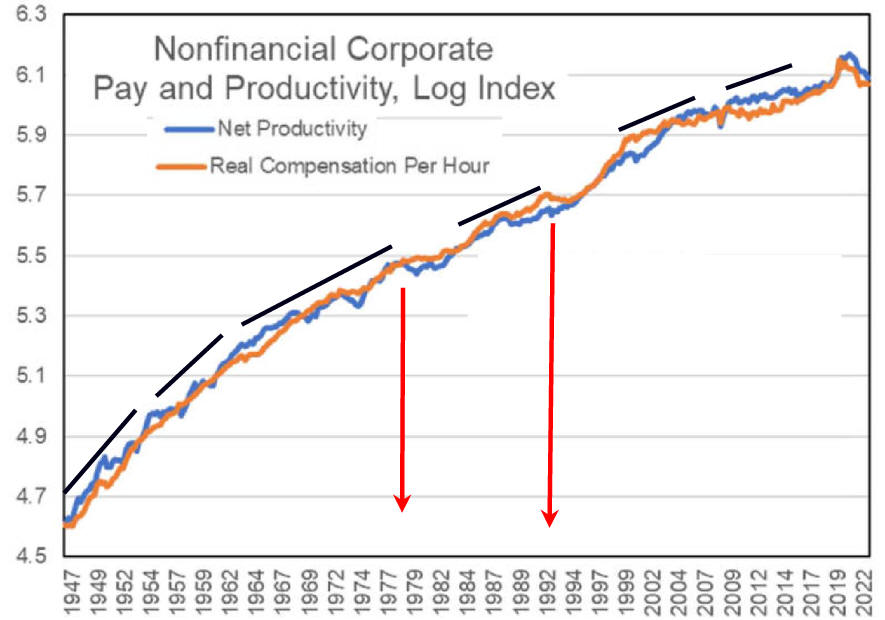|
Wages Stagnation: Causes Editorial Note: Illegal low skilled workers keep low wages even lower. See Wage Stagnation Solutions Economic Wellbeing Economics Internet Library Please Share! 12/12/22 |
|
1. Wages Grew Consistently Until 1972
WW 2 generated savings, pent-up demand and few foreign few competitors
generated 25 years of high profits higher wages and cooperative
unions.
As if Watergate and the
Cold War were not
enough, the oil cartel
OPEC
had the unity to succeeded with a 1973-74 oil embargo.
The embargo was targeted at nations perceived as supporting Israel
during the recent
Yom Kippur War.
Trouble was brewing.
Normality ended when Carter appointee FED Chairman Volker found higher
interest rates were not enough so he lowered commercial bank
reserves. This quickly pushed the Federal Funds Rate to 20%. Banks would not loan. Two recessions followed. The first cost
Carter
reelection and the second, though severe, was over so Reagan was
reelected.
|
2. Foreign Competition Began the Process
|
|
|
3.
Profits Beat
Wages |
|
US Companies have competed very well in a flat world using technology, outsourcing to Asia, Mexico...and by keeping wage increases low. Source Total compensation has done better although Obama Care gave companies an opportunity to again lower compensation. Question: What Happened in 1980?
|
|
4. Technological Adjustments Slow
Gilded Age
Politics from 1865 to 1910 Industrial Revolution #1 Gains Went to the Wealthy. New Century Workers
Gained Fewer Required Hours and
|
|
Graduates Doubled
|
||
|
Many Student,
Parents, Politicians, Educators See Can Education Reduce Stagnate Income Wages Down for All But the Best and Brightest |
||
|
|
||
|
Lower
Immigration Companies figured out that in one department there were stars worth a lot more than the average Joe. These companies looked for stars and paid them bigger dollars. In finance, high tech, and management the spread began to widen between those in the middle and the STARS. |
"In 2011, the top 30 percent of earners with a high-school degree earned more than what 50 percent of workers with an Associate’s degree earned. This same top-earning group of high-school-degree workers also made more than a quarter of workers with bachelor’s degrees. We find that higher-paid high-school-degreed workers are represented more heavily in occupations that require technical post-secondary education attainable through certificates or apprenticeships." clevelandfed.org See Economics of College Education |
|
|
Economic Return Based Upon What You Learn Not Where
Occupational churn
— the rate at which workers move to different occupations
Source Why a Stagnant Job Market?
|
||


